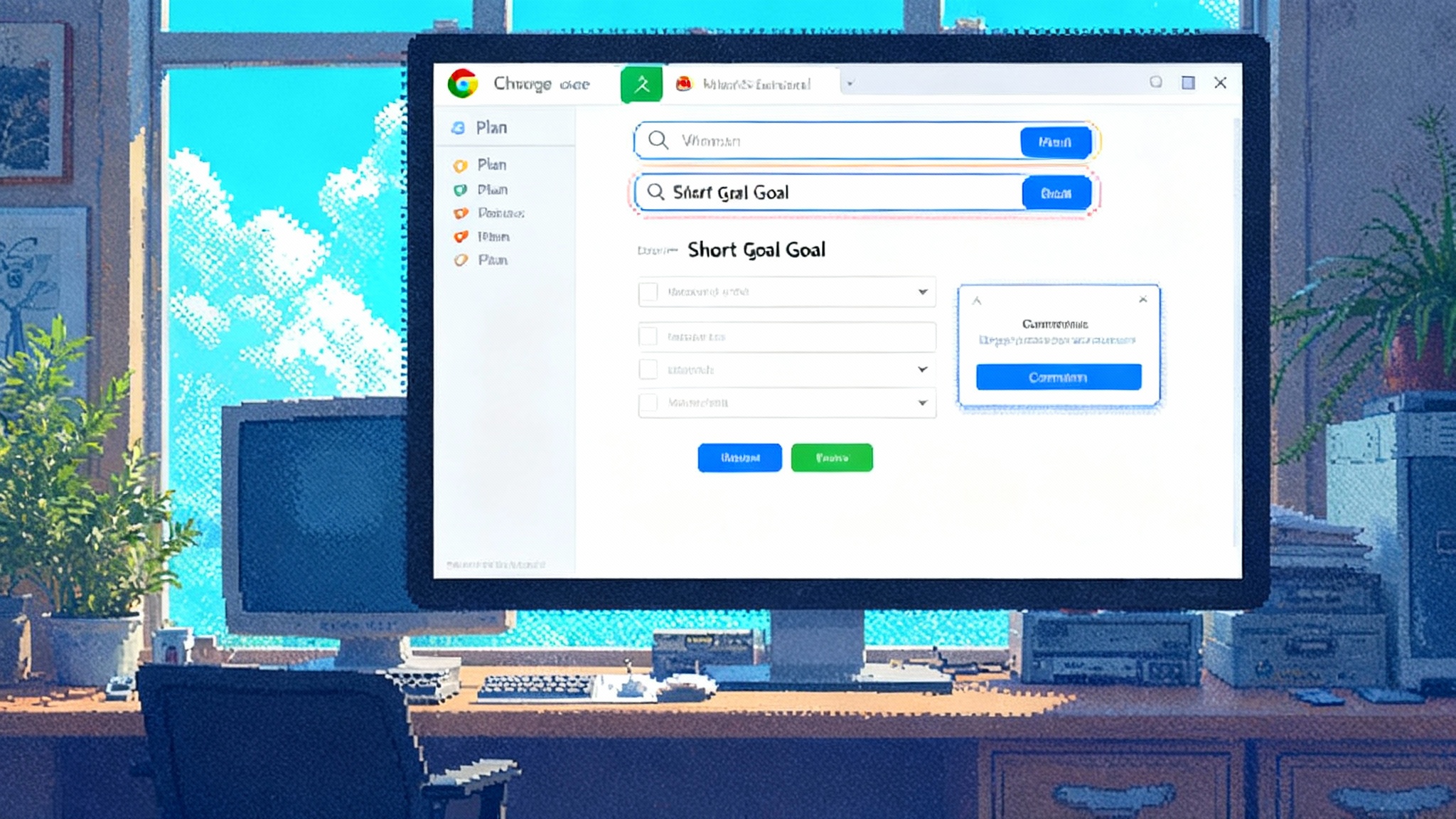Gemini-in-Chrome turns your browser into an AI agent platform
Google is rolling out Gemini directly inside Chrome for U.S. users, bringing AI Mode to the address bar, cross-tab summarization, and the first wave of agentic automation. Here is how that reshapes search, SEO, commerce, safety, and the browser’s role.

The browser becomes an agent
On September 18, 2025, Google confirmed that Gemini now lives inside Chrome for U.S. users on Mac and Windows, with mobile to follow. The company framed it as a shift from passive browsing to active assistance. You can click a small Gemini button in Chrome to ask questions about the page you are on or synthesize information across multiple tabs, and AI Mode is coming to the address bar so you can ask complex questions without leaving your current page. Google’s own announcement sets the tone: Chrome is being reimagined as an intelligent partner rather than just a renderer of web pages. That is a big line in the sand for how we will use the web. Chrome reimagined with AI.
This is not simply a chatbot floating above a browser window. It is the browser absorbing the chatbot. Chrome can see what you are reading, the tabs you have open, and the tasks you are trying to complete, then offer help that spans those contexts. That is the first time a mainstream browser with massive market share ships agentic features to the default experience at scale.
AI Mode in the omnibox changes search habits
Search has always been an interrupt. You hit a question, jump to the address bar, and go somewhere else. AI Mode shortens that loop. It turns the omnibox into a space where questions and follow ups live, with context from the page you are already on. That will shift a lot of behavior from classic query formulation toward conversational refinement, where you ask one higher level question, then steer with follow ups rather than spawning new tabs.
Cross tab summarization quietly matters as much. Many research tasks start with six or twelve open tabs. Chrome can now summarize across them and reconcile differences. That makes the browser feel less like a pile of documents and more like a workspace with a built in analyst.
The practical changes you will notice day one:
- Fewer back and forths to a traditional search results page because AI Mode can synthesize and suggest inside the address bar.
- More time in the current tab as AI fetches context from your open pages rather than making you navigate away.
- Follow ups become the default way you refine intent, which means fewer exact match keywords and more natural language.
What this means for SEO and publishers
If the address bar answers more questions before a click, the nature of organic traffic will change. We have already seen this with AI Overviews in Search. Bringing that logic one step closer into Chrome itself concentrates the first impression.
Expect three shifts:
-
Rankings give way to representation. The goal is not only to rank on a results page, it is to be represented in the synthesis that AI Mode or the Gemini panel shows. That favors content with clear structure, explicit claims, and citations that models can extract reliably. Schema markup is table stakes, but so is writing in a way that separates facts, steps, and caveats.
-
Intent beats keywords. When users ask the omnibox multi part questions like “compare warranty terms across these four mattresses and tell me which works for side sleepers,” your job is to make that comparison trivial to assemble. Side by side specs, eligibility rules, return windows, and pros and cons should be machine parsable. Think of your page as a component in an agent’s workflow, not just a destination for a human.
-
Authority becomes modular. Cross tab synthesis will quote and reconcile many sources at once. Niche experts with high signal density can surface alongside large brands if their content is crisp and up to date. Commodity copy will be abstracted away.
Publisher playbook:
- Publish the data behind your prose. Provide tables that expose price, warranty, size, ingredients, dates, and coverage. Offer CSV downloads or clear HTML tables rather than burying key facts in body copy.
- Use consistent sectioning and headings so agents can pull just the right snippet with minimal hallucination risk.
- For reviews and guides, include explicit decision frameworks. If an agent must recommend a camera under a budget with a specific use case, your content should map needs to options in a way that a model can follow.
- Monitor new entry points. In analytics, track traffic from Chrome surfaces and side panels as distinct from traditional Search. Chrome will become a referrer in its own right.
Agents that shop and schedule upend affiliate and ads
Google says it is building more advanced agentic capabilities that can complete multi step tasks end to end, such as ordering groceries or booking routine services. When the browser negotiates the form fills and decisions, three things change in commerce and adtech:
- From last click to last command. If a user instructs Gemini to “book a mid priced hotel within 15 minutes of the venue for two nights, free breakfast preferred,” what counts as the attributable touchpoint? The agent may consult several sites, parse results, and execute the booking on one. Traditional last click attribution breaks. Measurement must shift to incremental lift and to confirming whether the agent acted on a recommendation you influenced.
- Affiliate links become agent contracts. The old model pays for clicks or completed purchases via a tagged URL. Agents will prefer APIs and authenticated carts that support preview, comparison, and one step confirmation. Expect a rise in direct merchant integrations and dynamic offer feeds that the agent can interrogate. Affiliate networks will evolve toward real time bidding for an agent’s next best action, not just for ad slots.
- Creative shifts to constraints. In an agent run flow, your main levers are product availability, price, return policy, guarantees, and structured differentiation. Rich banners matter less than clear machine readable promises.
Adtech implications:
- Performance marketers will push toward cost per acquisition deals where the agent confirms conversion and quality signals. Expect more consented data sharing and server side APIs to close the loop.
- Comparison sites and coupon aggregators will need to expose structured inventories and policy data to remain in the synthesis. The agent can assemble comparison tables faster than any manual page, but it needs accurate feeds.
- Retailers should design agent friendly carts. Think saved profiles with constraints, item level substitution rules, and clear refund logic. The agent will ask for those and prefer merchants that supply them.
Safety features move on device, with tradeoffs
Chrome’s AI roadmap puts more safety logic in the browser. Google points to AI that can block scammy prompts and deceptive sites, simplify sensitive permission decisions, autofill securely, and help fix compromised passwords. The company even cites large reductions in spammy notification prompts on Android after adding AI warnings.
The benefits are obvious. On device screening can stop fake alerts and phishing traps before they load fully. Automated password fixes reduce the window of exposure after a breach. And the agent can pause before irreversible actions and ask for confirmation.
But the tradeoffs matter:
- More scanning means more context flowing through the browser’s safety systems. That raises questions about what is kept locally, what is uploaded for verification, and how that pipeline is governed. Users will want clear controls and transparent logs that show what the agent saw and what it did.
- False positives can block legitimate flows. Merchants and publishers need recourse mechanisms so that incorrectly flagged flows can be reviewed and cleared.
- Convenience can mask lock in. If the easiest way to reset a password or whitelist a permission is through Chrome’s guidance, users may stick to Google account credentials and Chrome profiles by default. That smoothness is a feature, but it creates gravitational pull.
A reasonable principle emerges: high friction actions should require explicit user confirmation, and Chrome should provide a trail of agent actions that you can review and undo.
The antitrust backdrop and Google’s app leverage
This rollout arrives as Google faces ongoing antitrust oversight in the United States. Recent reporting notes that the company avoided a forced breakup earlier this month while being pushed toward sharing certain data with competitors. The timing is not subtle. Integrating Gemini into the dominant browser, and wiring it tightly to Calendar, YouTube, and Maps, sets Chrome up as the default agent runtime for the web. That bundling posture will draw scrutiny. Google adds Gemini to Chrome after avoiding breakup.
From a product perspective, the integrations are logical. If you are watching a long how to video, letting the agent jump to a relevant timestamp is a useful cross product trick. If you are reading a page and want to schedule a meeting, dropping into Calendar without context loss feels natural. If you are planning a trip, tapping Maps for walking times and transit is practical.
From a policy perspective, mixing AI assistance with first party app privileges is delicate. The browser has a privileged vantage point. If Chrome’s agent prefers results and actions that keep you in Google surfaces, rivals will argue foreclosure. Chrome will need to show that agent decisions are based on user benefit and explicit constraints, not on corporate alignment. Expect guardrails like:
- Clear disclosure when an action uses Google’s own apps versus a third party equivalent.
- Default options that let users set their preferred calendars, video platforms, and mapping providers and keep those choices respected across agent actions.
- Auditable logs and partner APIs so third parties can verify that they have reasonable access to agent pathways.
How to prepare if you make things for the web
The steps differ by role, but the principle is the same. Optimize for the agent’s job, not just the human’s eyes.
For publishers and creators:
- Upgrade your information architecture. Give every piece of content a set of structured facts, a decision tree, and a summary designed for extraction. Treat your page as both an article and a feed.
- Refresh and timestamp key sections. Agents favor current clarity. If a return policy or price range is outdated, the synthesis will skip you.
- Write for reconciliation. If your take differs from the consensus, state why and provide the evidence. Agents will surface dissent if it is well argued and well sourced.
For retailers and marketplaces:
- Offer agent grade feeds. Provide product catalogs, live pricing, availability, shipping windows, and policy terms through reliable endpoints. Make it easy for agents to assemble carts and compare offers.
- Build authenticated previews. Let an agent simulate checkout with constraints like delivery by a date, price ceilings, or brand exclusions. Return a proposed cart with a clear total and substitution rules, then wait for the user’s confirmation.
- Align attribution to actions, not pages. Collaborate on server side conversions, post purchase events, and quality signals that an agent can confirm.
For SEOs and growth teams:
- Map your content to intents that agents handle. Enumerate the top twenty tasks related to your domain and ensure you have content components that answer them directly.
- Track Chrome surfaces as a unique acquisition channel. Separate the impact of AI Mode, Gemini panel summaries, and classic search to see where to invest.
- Run agent journey tests. Use prompts that mirror real user tasks and see how often your brand appears in syntheses or action plans. Fix the gaps with structured content and cleaner product data.
For security and privacy leads:
- Define local versus cloud processing for agent features. Publish a simple table that shows what stays on device and what is sent for verification, retention periods, and how to opt out.
- Prepare for appeal paths. If your flows get flagged as risky, have a technical and policy path to show compliance and restore access.
- Educate users on action logs. Make sure teams and customers know where to review the agent’s steps and how to reverse them.
The browser as the default agent runtime
Zoom out. Apps have spent a decade pulling the web into their own gardens. Agents reverse that trend by making the open web programmable again. If the agent understands pages, forms, and APIs, then a lot of tasks do not need bespoke apps. The browser is the place where all of that context already lives. It has history, cookies, logins, and permissions. Moving the agent into the browser was always going to happen. Google is simply first to do it at this scale.
Two things will determine whether this future feels great or claustrophobic:
- Choice architecture. Users must be able to set defaults for non Google services and see them honored at every agent decision point. If the agent really works for the user, it will be flexible.
- Action transparency. People should be able to see exactly what the agent did, why it did it, and how it used their data. Logs and controls are not a nice to have, they are the difference between trust and suspicion.
If Google gets those right, Chrome can become a neutral workbench where millions of tiny agents complete the boring steps of the web while you stay focused on outcomes. If it does not, expect regulators to raise eyebrows and for challengers to pitch agent first browsers with stronger neutrality promises.
The bottom line
Gemini inside Chrome brings agentic browsing to the mainstream. AI Mode in the omnibox reduces friction in search and favors content designed for extraction. Cross tab summaries will reward clarity and structure over volume. Multi step automation will push affiliate and adtech toward APIs, attribution to actions, and agent friendly carts. Safety features will move more decisions onto the device, which helps users but heightens expectations for transparency and control. And the tight coupling with Google apps, arriving under antitrust pressure, makes the browser feel like the default operating system for web agents.
That is a lot of change at once. The best way to adapt is simple. Make your pages legible to machines, your offers callable by agents, and your privacy posture understandable to real people. The rest will follow.



